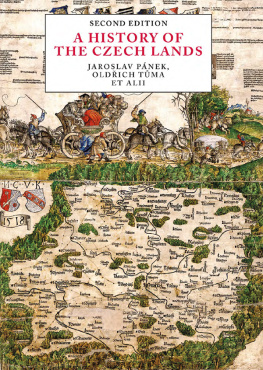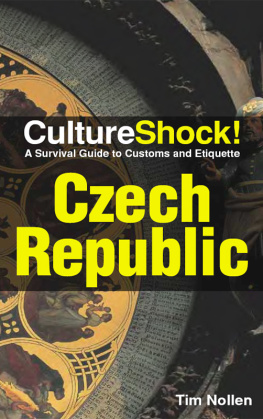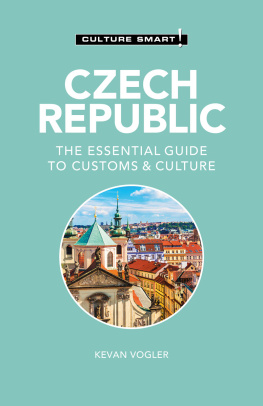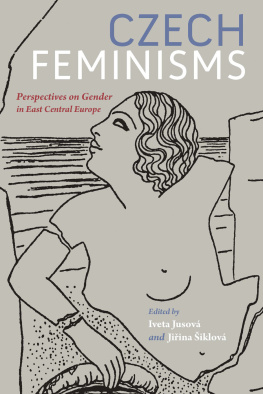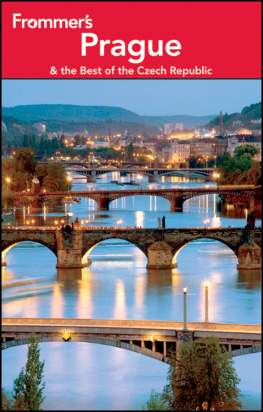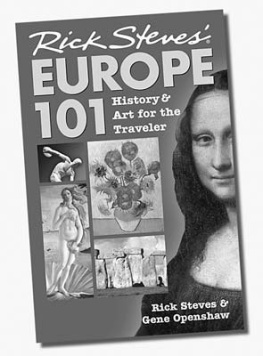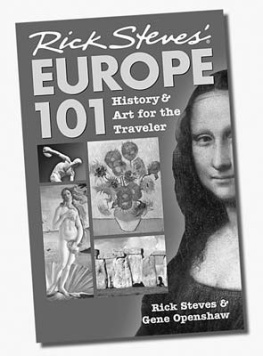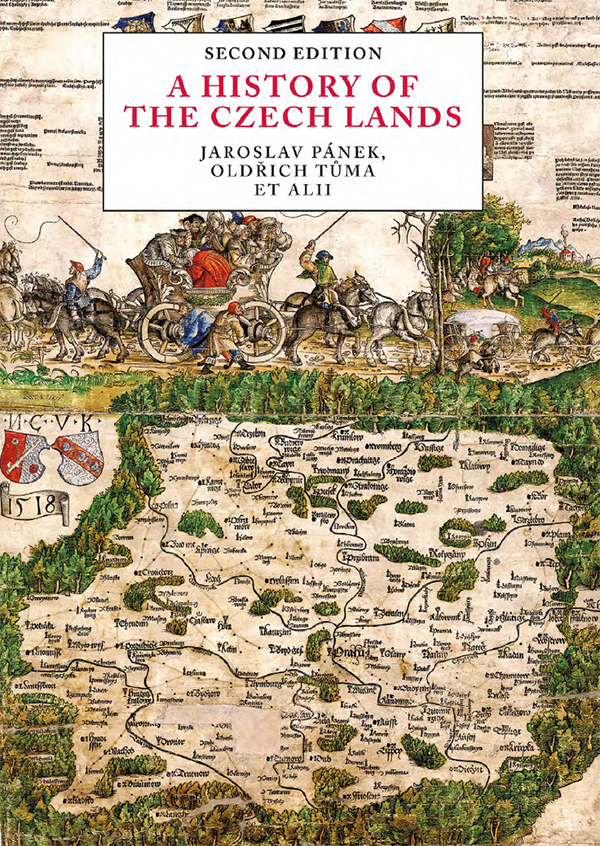
A History of the Czech Lands
Main authors and editors:
prof. PhDr. Jaroslav Pnek, DrSc., PhDr. Oldich Tma, Ph.D.
Authors: PhDr. Jaroslav Boubn, CSc. PhDr. Pavel Cibulka, CSc.
PhDr. Jan Gebhart, CSc. PhDr. Martina Ondo Greenkov, Ph.D.
PhDr. Jan Hjek, CSc. doc. PhDr. Josef Harna, CSc.
prof. PhDr. Milan Hlavaka, CSc. prof. PhDr. Ji Kocian, CSc.
doc. PhDr. Martin Kuera, CSc. prof. PhDr. Ji Mikulec, CSc.
doc. PhDr. Ji Pernes, Ph.D. PhDr. Miloslav Polvka, CSc.
prof. PhDr. Eva Semotanov, DrSc. PhDr. Ji Suk, Ph.D.
prof. PhDr. Frantiek mahel, DrSc. PhDr. Duan Tetk, CSc.
Mgr. Tom Zahradnek, Ph.D. prof. PhDr. Josef emlika, DrSc.

| Reviewed by: | prof. PhDr. Zdenk Jirsek, CSc. |
| (1st edition, 2009) | prof. PhDr. Josef Petr, CSc.
prof. PhDr. Josef Vlka, CSc. |
Translators: Justin Quinn (Introduction, IVIII)
Petra Key (IXXV, XXIII)
Lea Bennis (XVIXXII)
Published by Charles University,
Karolinum Press
Cover and layout Zdenk Ziegler
Typesetting DTP Karolinum Press
Second, enlarged edition
Charles University, 2018
Text Jaroslav Pnek, Oldich Tma et al., 2018
Photography Archiv bezpenostnch sloek; Archiv Univerzity Karlovy;
Biskupstv litomick; TK / Otto Ballon Mierny, Jovan Dezort, Michal Doleal, Ji Finda, Jan Rycheck, Jan Kouba, Viktor Lomoz, Vladislav Jasiok, estmr Jr, Jaroslav Hejzlar, Kolek, Leo Nebor, Zdenk Havelka, Ji Rubli, tpn andrik, Ji ourek, Karel Kestner, Michal Krumphanzl, Pavel Hroch, Jana Konrov, Jana Nosekov, Libor Zavoral; Fotogen.cz; Galerie Stedoeskho kraje v Kutn Hoe; Historick stav AV R; Jihomoravsk muzeum ve Znojm; Knihovna Nrodnho muzea; Martin Gojda / AR AV R a ZU Plze; Moravsk galerie; Muzeum Kromska; Nrodn knihovna R; Nrodn muzeum, sterreichische Nationalbibliothek Wien; Slovensk nrodn kninica Literrny archv; Sprva praskho hradu / Jan Gloc; Umleckoprmyslov museum v Praze; Vojensk historick stav, 2018
ISBN 978-80-246-4073-0 (epub)
ISBN 978-80-246-4072-3 (kindle)
ISBN 978-80-246-3135-6 (pdf)
ISBN 978-80-246-1645-2 (print)
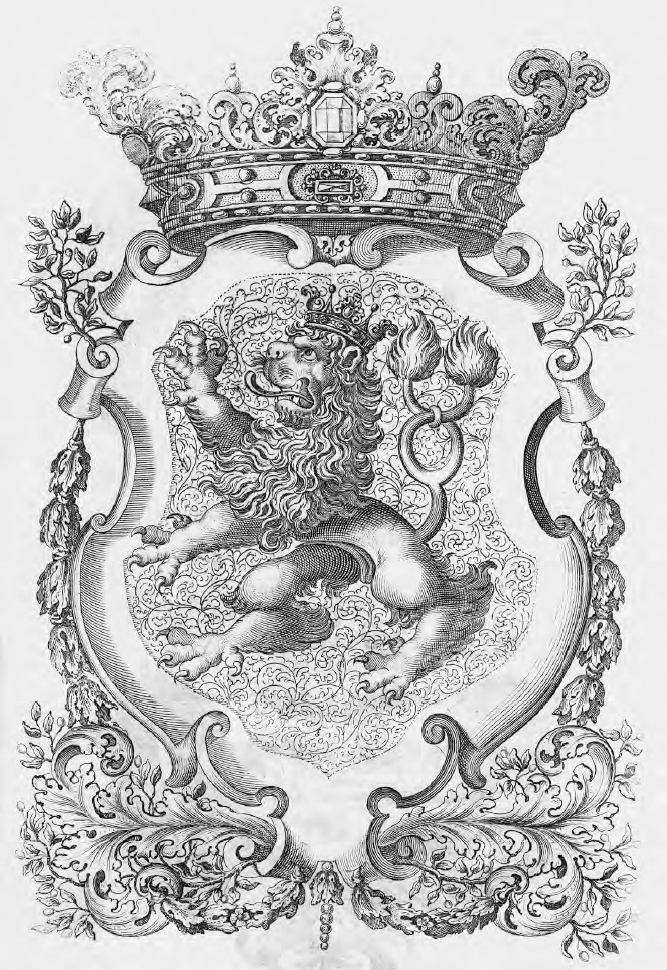
Historical emblem of the Bohemian Kingdom. A two-tailed jumping lion was an emblem of the Bohemian Kingdom from the 13th century. It has been used till today as part of the state emblem of the Czech Republic. Engraving from a new edition of the Renewed Land Ordinance for the Bohemian Kingdom from the 18th century.
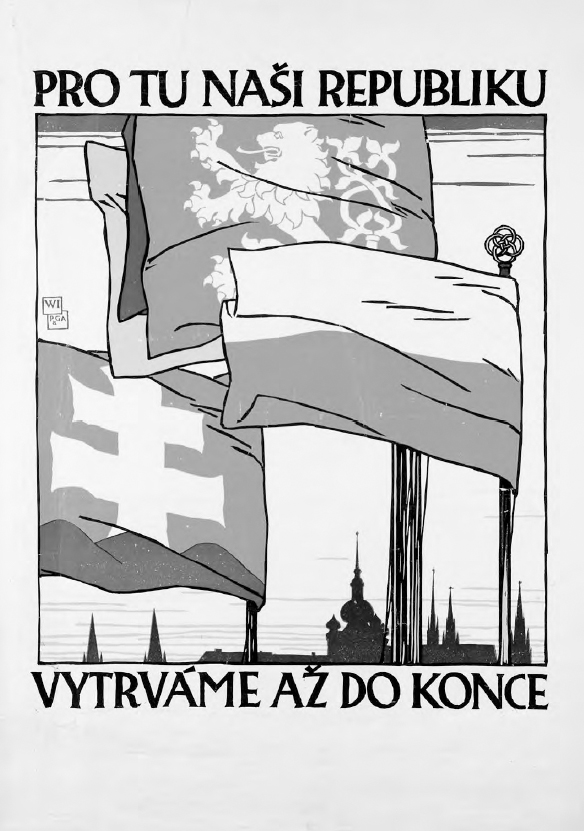
Vojtch Preissigs poster, For Our Republic, We Shall Persevere to the End, from 1918.
Introduction to the second edition
At the beginning of May 2004, the Czech Republic joined the European Union. The histories of the individual states in this community are both perceived and known to varying degrees. When the European past is narrated, a small number of states dominate, either because of the extraordinary culture they produced or the power that they wielded; while the others are either occasionally remarked upon or completely overlooked. Nearly every child in primary school knows at least something about the former, while the latter remain vague or utterly unknown even to most educated people. The former are usually and automatically perceived as the axes of any framework of a common European history, while generally speaking even renowned experts have little to say about the latter. To this group belong mainly those states that seem at first glance young, including the new members of the European Union. Little is known of them, and thus these countries have no choice but to strive to show that they too have indisputably belonged to Europe for a very long time. Some of these countries at least have the advantage of a name that has not changed for centuries: Poland and Malta, to give two instances, have held the same appellation for over a thousand years and thus they are generally identifiable.
Czechia (esko) however does not have that advantage. Although the historical lands which constitute it that is, Bohemia (echy), Moravia (Morava) and the southern part of Silesia (Slezsko) have belonged together for many centuries now, the framework of their state has changed many times in that period. Sometimes the change was profound, on other occasions it was only formal; but each change destabilized these countries in the eyes of Europe. After Great Moravia (Velk Morava; 9th century) there came the Bohemian Principality (esk knectv) whose ruler occasionally donned a royal crown (9th to 12th centuries); and the Bohemian Kingdom (esk krlovstv; from the end of the 12th century), which in the 14th century spread its territory to the north and took the title of the Crown of the Bohemian Kingdom (Koruna Krlovstv eskho) or the Bohemian Crown (esk koruna). In 1526 this state, made up of five crown lands, entered a confederation with the lands of Austria and Hungary, becoming one of the three main parts of the Habsburg Monarchy. After an unsuccessful attempt to re-arrange Europe on the basis of the Estates, in which the Bohemian Confederation was to have a firm place (16191620), the Habsburg conception of Central Europe was established. The Czech state was ever more firmly bound to the Viennese governing centre, until the year 1804 when it almost dissolved into the Austrian Empire in the long process of centralization. After the dualistic transformation of the Habsburg monarchy into Austro-Hungary in 1867, Bohemia, Moravia and Czech (at that time Austrian) Silesia became part of the western half of the monarchy, named Cisleithania (Pedlitavsko).
Austro-Hungary was defeated in World War I, with Czechoslovaks participating politically and militarily in anti-Habsburg resistance. This enabled the establishment of the independent Czechoslovak Republic (Republika eskoslovensk), which in the years 19181938 became an active element in the system of European states. The Munich Agreement of 29 September 1938 limited this independent state to the reduced Czecho-Slovakia (esko-Slovensko), which under the pressure of Nazi Germany collapsed with the creation of the Slovak Republic (14 March 1939). The remainder of Bohemian and Moravian territory was occupied by the German army on 15 March 1939, and the following day the Protectorate of Bohemia and Moravia (Protektort echy a Morava; in German, Protektorat Bhmen und Mhren) was established. After liberation by the Soviet and American armies at the beginning of May 1945, the restored Czechoslovak Republic (eskoslovensk republika) emerged. As a consequence of a Communist putsch in February 1948, it became one of the satellites of the Soviet Union and in 1960 changed its name to the Czechoslovak Socialist Republic (eskoslovensk socialistick republika). The federalization of this state led at the beginning of 1969 to the administrative unification of the Czech Lands under the name the Czech Socialist Republic (esk socialistick republika). The fall of the Communist regime in November 1989 brought several smaller changes to the countrys name: it was now the Czech and Slovak Federal Republic (

